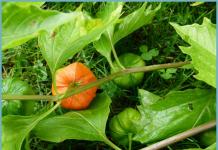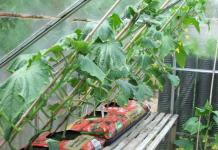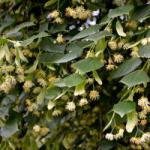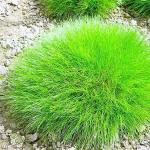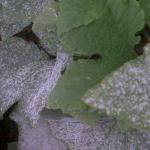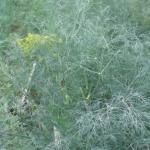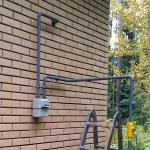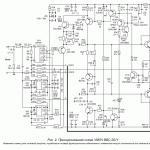To combat weeds, special preparations have been created - herbicides. With their help, you can get rid of weeds both on a one-time basis and on a regular basis. And in order not to harm useful plants, it is important to figure out which weed herbicides are best used.
These days, there are safe herbicides for weed control on the shelves of stores in the free market, the correct use of which will not affect either useful plants or your health. There are two large groups of weed control agents:
- herbicides from weeds of continuous action - act on all vegetation;
- selective action - destroy certain crops.
Also, herbicides are divided according to the method of their application:
- which are applied to the soil. Being in the ground for several months, they are absorbed by the roots of plants, gradually destroying them. With such substances, you need to be more careful - their unsystematic introduction can ruin future crops.
- which are sprayed onto the leaves. These drugs decompose much faster and cause less damage to the environment.

Herbicides against weeds of continuous action
Continuous weed herbicides for summer cottages are used in the following situations:
- for the destruction of weeds during the period of active vegetation of cultivated plants;
- some herbicides against weeds accelerate the technical maturation of certain crops;
- to kill weeds after harvest.
Such herbicides against perennial weeds are successfully used both on an industrial scale and in private backyards. In addition, modern chemists are working to make these substances as effective as possible on the one hand and safe for the environment on the other. Therefore, modern herbicides are very different from those released a few decades ago.
Selective weed herbicides are a real breakthrough for agrochemists. Such substances kill weeds in the beds without affecting a particular crop - tomatoes, potatoes or strawberries, for example. Or they can destroy only one type of weed - wheatgrass, millet and others. The results of their application can be seen after 2-6 weeks. However, at the same time, weeds are completely destroyed: both the aerial part and the root system of the plant die off.

What herbicides are best for weeds?
Herbicide treatment of weeds should not be done thoughtlessly. These chemicals require proper application: compliance with the treatment schedule, dosage regimen and many other factors based on your needs:
- Continuous preparations are used, as a rule, in early spring, before seed germination and in autumn, after harvest. Such herbicides against winter weeds are often used in farms. Substances of selective action are used during the active growing season to suppress unnecessary grass.
- Some preparations are applied several times per season, while others require a single treatment.
- It should also be taken into account the fact that with the long-term application of the herbicide for planting potatoes in the future, beets will not grow in this area.
To grow a beautiful green lawn like from a postcard or a photograph, it is worth putting in a lot of effort. And the fight against weeds here can be carried out in several stages:
- Weeds are removed with continuous action preparations even before planting the lawn. To do this, in the fall, the proposed site is treated with Tornado or Diquat preparations. After the stems have dried, the earth is dug up and the roots are removed. A month later, the treatment is repeated.
- Selective turf herbicides are mainly used to control dandelions, thistle thistle and psyllium. After mowing the lawn in cloudy, calm weather, the preparations Lontrel 300, Deimos or Hacker should be sprayed onto the lawn.

Herbicides for strawberries from weeds
Weed grass is not the best neighbor for strawberries. It sucks nutrients and water out of the soil, obscures and drowns out seedlings. If mechanical processing is not enough, then special chemicals will come to your aid. You can make them several times per season:
- As in the case of a lawn, weeds can be removed even before planting seedlings. The procedure can be carried out in autumn or early spring with any herbicide of continuous action.
- The second treatment falls on the first month of planting growth, since weeds grow best in early spring. A good choice would be to use Dactal or Lontrel 300 preparations.
- Any weed control herbicide for strawberries should be used before the ovaries form, so the last grass treatment is in late April-early May.
- In the fall, after removing the leaves, plantings can be treated with Lenacil.
Herbicide for weed control on potatoes is used very often. Selective weed control products on potatoes fill entire store shelves. The most popular and time-tested and gardeners of them are:
- "Zenkor". This drug is completely safe not only for potatoes, but also for carrots and nightshade crops. The active substance, metribuzin, begins to decompose in the soil 3 months after application. It is sold in concentrated form and affects not only weeds, but also leaves a protective film on the surface of the earth. Compatible with most insecticides and pesticides.
- "Lapis lazuli" contains the same active ingredient as "Zenkor", but in a higher concentration. Therefore, it is used only once a season and only in special protective clothing, a respirator and gloves.
- "Titus"- an effective preparation both from monocotyledonous, and from dicotyledonous vegetation. The first signs of death are noticeable already 3 days after spraying, and complete destruction occurs after 2 weeks. The drug can lead to temporary yellowing of potato leaves, so it is not used near seed plantings.

Herbicides for onions from weeds
As for all other crops, weed control in onion plantings begins even during autumn plowing:
- Two weeks before it, the plot is treated with Roundup or Fosulen preparations.
- After sowing onions, other herbicides against weeds are used - "Dactal" or "Ramrod".
- If the weed grass overcomes during the growth of the onion, then the plantings can be sprayed with Totril.
Raspberry, beloved by many, is not whimsical to care for. However, it is not worth letting the growth of this tasty berry take its course, because both plantings overgrown with grass and a large number of offspring take away the strength of the plant, thicken and obscure the plantings. At home, you can completely get by with cultivating row spacings and weeding the raspberry rows themselves. But in large raspberries, herbicides are used to kill weeds. The most popular of them is Simazin. They process the aisles of plantings twice a season - in spring and autumn.

It is easy to get confused in the variety of types of modern herbicides. They differ not only in the principle of action, but also in the form of release, the time of destruction of weeds, the degree of toxicity and other factors. The best herbicides from weeds of continuous action, tested by time and other summer residents, are:
- "Rap"- the systemic herbicide destroying both annual, and perennial weeds entirely. Moderately toxic.
- "Tornado"- the highly concentrated herbicide well eliminating all types of weeds. Approved for use in suburban areas.
- "Total"- a drug that can be used in a wide range of temperatures. It is quickly removed from the soil, so after its use on the site, you can immediately grow cultivated vegetation.
- "Torch"- quickly destroys all weeds on the site. In addition, cultivated plantings can be planted as early as 7 days after treatment.
- "Roundup"- recognized as one of the most popular and effective herbicides. Effectively removes weeds and is safe for people and animals.
The most popular selective weed control herbicides are:
- "Lontrel 300" low toxicity, does not affect cereals and shrubs like raspberries and strawberries. Effective against dandelions, thistle and other weeds.
- "Hacker VRG" good for combating chamomile, dandelion and thistle in lawn plantings.
- "Lintour" destroys weeds, leaving them green, which does not spoil the overall appearance of the lawn.
- "Lapis lazuli" effective against monocotyledonous cereals and dicotyledonous perennials.
- "Excellent student" recommended for use in planting potatoes and other vegetables in private summer cottages.

How to treat weeds with herbicides?
Given the high concentration and toxicity, it is important to know how to apply herbicides against weeds in your area so as not to harm useful plantings and the health of people and animals. There are just a few rules here:
- Use for preparing and spraying the preparation only special utensils and containers for herbicides that do not come into contact with food and other preparations.
- Use the drug only in the concentrations and doses specified by the manufacturer.
- Do not neglect personal protective equipment - closed clothing and shoes, a respirator and eye protection.
- When using even selective preparations, try to avoid getting them on cultural plantings.
- After processing, do not allow the presence of people and animals on the site for the time specified in the instructions.
The use of herbicides against weeds is becoming an increasingly popular agricultural technique, not only in industrial and farm enterprises, but also in summer cottages. Modern drugs are low-toxic and effective at the same time. Their competent use reduces to zero harm to cultural plantings and human health.
Weeds for a gardener or summer resident are a constant problem. Once upon a time, they were fought very simply - weeding all the beds for hours, but today, fortunately, weeds can be removed in a faster and easier way. The main assistants in this matter are herbicides - special solutions that do not allow weeds to "suffocate" useful plants.
Purpose and classification of herbicides
Why weeds must be removed? It seems to be ordinary greens, but only useless ... But everything is as harmless as it might seem at first glance. Weeds, like any plant, require nutrients, space and sun. They deprive useful plants of all this, and instead of large fruits and powerful stems, barely alive crops with low yields grow. In addition, weeds are a habitat for bacteria and pests, as well as centers for the spread of diseases.
overgrown with weeds a field or garden, even if constantly fertilized, will not produce a good harvest and will eventually dry out. Ordinary weeds reduce the yield by 12-17%, and this does not take into account pests such as rodents, birds, and insects. As a result, food prices increase, the efficiency of time and financial costs for watering, fertilizing, etc. decreases. In other words, weeds nullify all attempts to improve the quality of fruits and yields.
The cost of weed control is very high, but it fully pays off with effective results. There are many options for getting rid of weeds.- deplete (cut shoots), pull out with roots, treat with chemicals, launch pests of a “narrowly targeted action”. As statistics show, it is the treatment with chemicals that is the most effective. Herbicides can save a huge amount of money and time, increase the yield of fruit plants without harming their quality, and also minimize weeding work.
What are herbicides?
Herbicides are substances that are used to kill weeds. Their scope is very extensive, but they are used, as a rule, for processing crops. The herbicide may contain one or more working components, which makes it possible to significantly increase their spectrum of action.
Since the pesticide market offers a large number of herbicides, it's very hard to classify them.. So, according to the type of action, they can be continuous and selective. The latter are used to process specific crops, for example, only beets or potatoes. The main task of selective herbicides is not to harm the useful plant, but to destroy only the weed. What explains this selectivity?
Classification of herbicides
Now we come close to the next classification. Herbicides are harmless to useful plants, because they cannot penetrate the thick skin, or its chemical compounds are not so strong (biochemical selectivity). Morphological differences between useful crops and weeds also play an important role., topographic differences (depth of penetration of the chemical into the soil), etc.
 Continuous chemicals are more powerful and are used for the absolute elimination of vegetation. These herbicides are used not only in agriculture, but also in industry, for example, if you need to clear a construction site or railway track of weeds.
Continuous chemicals are more powerful and are used for the absolute elimination of vegetation. These herbicides are used not only in agriculture, but also in industry, for example, if you need to clear a construction site or railway track of weeds.
Herbicides, penetrating the plant, can move in various ways. With this in mind, systemic and contact drugs are isolated.. The latter "work" only in those places where the herbicide has entered, and do not move inside the plants. Systemic, on the other hand, can pass inward and diverge in all areas of the weed with the course of plant sap. Naturally, systemic herbicides are more effective, as they completely suppress unnecessary vegetation, including its root and ground parts. Sometimes they are the only possible option to remove weeds, for example, in the case of creeping wheatgrass, which has a rather “tenacious” and powerful root system.
Herbicides can penetrate the leaves and other ground organs of weeds, act only on the roots or the ground around, or have a combined effect. You can add them either directly to the ground before crops, or after sprouts appear.
Also in terms of spectrum distinguish antidicotyledonous, or graminicides, killing weeds in crops of cereals, and anticereal herbicides. The former are also known as anti-broadleaf and are used against dicotyledonous weeds.
How to choose a herbicide?
When purchasing herbicides against weeds, it is important to make the right choice, otherwise, you can destroy not only them, but also useful cultures. At best, these drugs will not produce the desired effect, so you need to carefully study the nature and selectivity of the drugs. For example, "Targa", "Poast", "Tornado" and "Furor-super" remove weeds of the thin-legged family growing in crops of dicotyledonous crops, and "Puma-super" will be able to bring out both wild oats and bent grass, although they are one family.
 As already mentioned above, the specificity of the action of herbicides depends on the external and anatomical differences of plants. For example, crops that have a waxy coating, dense pubescence and dense cuticles may well withstand the action of herbicides, since the drug simply cannot break through this natural "armor". Cultures with narrow “arrow” leaves also have their own protective mechanism - chemicals flow down the “feathers” without having time to get inside (onions, garlic, etc.).
As already mentioned above, the specificity of the action of herbicides depends on the external and anatomical differences of plants. For example, crops that have a waxy coating, dense pubescence and dense cuticles may well withstand the action of herbicides, since the drug simply cannot break through this natural "armor". Cultures with narrow “arrow” leaves also have their own protective mechanism - chemicals flow down the “feathers” without having time to get inside (onions, garlic, etc.).
Those cultivated plants whose roots go deep into the ground, after a while become immune to herbicides, located in the upper layers of the earth and lacking to the roots (creeping mustard, horsetail, field sow thistle).
Modern genetic engineering and biotechnology work wonders. Scientists can already control the resistance of useful crops to chemical weed poisons. They identify the genetic code for crop resistance, instill this code in all plants, and eventually get crops that can be safely sprayed with herbicides.
The cost of a chemical preparation depends on its principle of action and the components used in the composition. Selective preparations are usually more expensive than general herbicides, since they affect plants much more difficult and create a more effective result.
How effective are herbicides?
 The effectiveness of herbicides is primarily affected by the dosage of the drug, the method of application and strict adherence to the instructions for use. Once on the surface of the soil, chemicals quickly lose their toxicity. due to the action of wind, ultraviolet radiation and other factors. Complete detox occurs in about 22-24 days, but every drug has its own degradation time. Substances are most evenly distributed in areas of weed seed germination during irrigation or during rain, as well as in the first days after addition.
The effectiveness of herbicides is primarily affected by the dosage of the drug, the method of application and strict adherence to the instructions for use. Once on the surface of the soil, chemicals quickly lose their toxicity. due to the action of wind, ultraviolet radiation and other factors. Complete detox occurs in about 22-24 days, but every drug has its own degradation time. Substances are most evenly distributed in areas of weed seed germination during irrigation or during rain, as well as in the first days after addition.
Also the effectiveness of herbicide treatment depends significantly on the quality of land preparation spring. If there are many dense lumps several centimeters in size in the soil, then the effect of the preparations will be significantly weakened, since it will not be able to be distributed evenly over the ground. Even with good watering and optimal rainfall in spring, the fully protective properties of herbicides are not activated.
Another important condition is the incorporation of preparations immediately after sowing, until the earth has lost moisture. So that they do not lose activity, we advise you to loosen them into the topsoil immediately after application (preferably simultaneously with it).
If you are using herbicides for vegetative plants, then it is advisable to add them at a temperature of +22 C in dry, calm weather the morning immediately after the dew has left. Herbicides have the most toxic effect when treating weeds in the early stages (when 3 to 7 leaves have appeared). Herbicides work slowly, but are more resistant to the damaging effects of the environment.
Herbicide use
As you already understand, different herbicides are needed to increase the yield of different crops. To choose the right chemical, you need to have a lot of agrotechnical knowledge, but, fortunately, manufacturers have made life easier for amateur gardeners and sorted chemicals in an understandable and simple way.
What herbicides to use?
- Cabbage - "Panther", "Butizan", "Semeron", "Stomp", "Fuselad", "Targa", "Tornado". The dosage of each chemical is written on the packaging. "Butizan" is used to control dicotyledonous and cereal weeds in the seedling method of cultivation. Seedlings should be planted a few days after the drug is applied to the ground. In the next 2-3 weeks, the plants do not need to be processed.
"Treflan" and "Stomp" are added until the plants are planted with loosening of the preparations.
The dosage of chemicals depends on the physical properties of the soil and its degree of fertility. For fertile heavy soil, slightly more herbicides are used than for light ones.
"Panther" fights with perennial and annual cereals.

"Stomp" 33% is used to remove annual dicotyledonous grasses before sowing or before germination.
"Zenkor" is used before planting seedlings and during the growing season, when the bushes have released 3-5 leaves each.
"Fuselad" should be added during the active growing season of weeds before the peeling phase, when the plant has 3-4 leaves.
"Targa"- used for spraying during the growing season, when several leaves have sprouted in tomatoes. If the site is significantly clogged with perennial weeds larger than 15 cm, then the dosage should be doubled.

"Betanal" removes dicotyledonous annual weeds during the growing season, when they form 3-4 leaves.
"Gekselur" quite toxic and effective against dicotyledonous and cereal annual weeds. With good watering, complete decay occurs in 3-4 months.
- Bow - "Goal", "Stomp", "Iotril", "Totril", "Panther", "Naboo", "Fuselad-super", "Targa-super".
"Goal" is used for dicotyledonous weeds during the growing season. "Totril" shows good results when weeds have 4-5 leaves. "Panther" fights perennial and annual weeds, in the phase of 4-5 leaves.

"Gezagard" must be added 4-6 days before germination.
"Frontier" allows you to clean plantings from annual and perennial cereal weeds, and it is also added to potato shoots.
Before using herbicides, do not forget that their dosage must be correlated with the chemical and physical characteristics of the soil on the site. Controlling weeds with herbicides greatly simplifies farming and increases yields. The most important thing is to carefully understand the specifics of the action of a particular drug and strictly observe the dosage.
I just "got" the weeds. Mow them, there is no strength. I took "Tornado", a small plastic vial. On the sidewall there is an instruction for use, folded in a "book". The instructions are quite detailed. This herbicide removes all weeds without exception. I do the processing once, in the morning, so that there are no direct rays of the sun. There are simply no weeds resistant to this drug. The first signs of weed death appear after about a week, complete destruction takes about a month.
Marina, Lviv
The simplest remedy for weeds is, of course, weeding. But if you need to cultivate virgin soil, lime some weed that cannot be weeded, like calistegia, then you can’t do without herbicides. In terms of its composition, Ground is similar to Tornado and Roundup, but it costs less - in large volumes (0.5 - 1 l) it will cost approximately one ruble per milliliter, for example, 3 square meters can be processed per ruble. m. And do not hesitate to purchase large packs - the shelf life of the chemical is 5 years!
Anna, Odessa
Tornado must be bred with at least 25 milliliters per 3 liters of water, do not process weeds in windy weather and before rain. Do not spray large grass. Apply the agent without getting on cultivated plants. After treatment, rinse the spray gun, and you can pour the washing water on the weeds.
Despite the large number of drugs that fight weeds, you will be able to purchase the most effective plant protection products only from those who have been engaged in such developments for more than one year. Herbicides themselves against weeds have been used for a long time. These are high-quality preparations that are used to quickly destroy individual plants (which are undesirable in the garden). Workers in the agricultural and chemical industries constantly involve scientists from different countries in the process of testing drugs and use the latest developments with pleasure.
By the way, the very name of the drug in translation from Latin means literally - to kill the grass. Such drugs are divided into two groups - one has a continuous, the other - a selective effect. It should be borne in mind that most of the weeds growing in the ground are annuals and live only one season. They grow from seeds. You need to deal with them "targeted", given the fact of seasonality. But it is not so easy to deal with perennials, because under favorable conditions they can germinate annually. Both one and the other take light, water and nutrients from the planted plants.
If you do not carry out proper work, then you can lose the harvest. According to experts, the best method in the fight against weeds is weeding. True, it helps only in the fight against annuals, while perennials can later germinate from the rhizomes remaining in the soil. Of course, a lot also depends on watering, weather, and the culture itself. If you plan to apply a herbicide of continuous action, then to destroy all the vegetation in your area, it will be enough to spray the leaves of your plants with a solution of the herbicide preparation.
And after 2-3 weeks the result will be visible - the weeds will dry right along with the roots. It is convenient to use this tillage technology for complete cleaning of areas, for example, for sowing a lawn, or as a tillage before creating new beds.
Such preparations are successfully used to put in order the most neglected lands. However, sometimes only they help in the fight against the most "malicious" weeds, such as hogweed. If you are going to apply selective herbicides and thus destroy the weeds hiding in a particular crop, then it will be easy for you to deal with, for example, the problem of dandelions.
Different groups of herbicides or a targeted method of work
Weed control with herbicides has been effective for decades. completely different designs. Those that belong to the herbicides of the so-called continuous action, destroy all kinds of plants in a row on your site (and this must be taken into account), and those that are on the list of the second type (and are applicable for selective action) are most often used for complete weed control in areas such as roadsides, various industrial sites, or near railroad tracks.
By the way, herbicides of the second type are also divided into systemic (kill the root system of plants), contact (act directly upon contact) and soil (work with the soil, preventing weeds from growing). In areas near the house, drugs of selective (or, as they are also called, selective) action are most often used.
Due to the fact that they are able to infect certain types of plants and not affect others at all, they are in demand among farmers. If the "bouquet" of weeds is large enough, then you will have to apply the solution several times - even before sowing crops, then before the appearance of weeds, then at different periods of plant ripening.
Treatment of weeds with herbicides - choose the right ones!
In order to get to know herbicides better, we offer you interesting facts and a number of drugs for general and narrow purposes.
- Previously, herbicides were used to destroy marijuana and coca plantations.
- A drug Gezagard successfully used in crops of carrots, potatoes, legumes, corn, parsley, sunflower, lentils, celery. It is a selective herbicide.
- A drug Pivot(also selective action) is used to protect against weeds of leguminous crops (soybeans, peas).
- A drug Lontrel-zoodD also applies to elections. Best used when tidying lawns. A good helper in the fight against annual and perennial weeds, especially on cereal crops. Should be used after harvest.
- A drug Lapis lazuli. Also a selective herbicide. Effective for planting potatoes. Such a substance skillfully destroys weeds and does not damage the culture itself. In addition, it creates a protective barrier in the soil against the germination of weed pests and provides protection for 2 months.
- A drug Tornado helps in the fight against all types of weeds. It is a herbicide of continuous action. It is better to use for tillage before sowing.
Herbicides are chemicals that, when in contact with weeds, cause their death. In order not to destroy garden crops when spraying weeds, it is necessary to know the properties of herbicides, how they affect weeds, the rules for preparing solutions and processing times.
Only the correct application of herbicides will destroy weeds without harming the health of humans, animals and bees.
Herbicide translated from Latin means "killing grass." These are potentially dangerous chemical substances, which gardeners should turn to last. illiterate application of herbicides will destroy all vegetation, including edible crops, and, in addition, will have a very negative impact on human and animal health.
Weed control
The most optimal and environmentally friendly method getting rid of weeds is their physical destruction by regular weeding with a selection of rhizomes and root segments. But sometimes, especially when developing virgin areas, herbicide intervention is necessary. In this case, it is necessary to know exactly which herbicide use .
herbicides according to the effect on weeds are divided into ground And soil(sometimes called vegetable). The former are applied to the soil, the latter are treated with green plants.
Soil herbicides it is better not to use it on a personal plot, although there is an opinion (very controversial) that decomposing in the soil, they do not harm humans and animals.
According to the effect on weeds, herbicides are divided into 2 groups:
- continuous action, which destroy all vegetation on the site when processing green plants. Recommended for use in the development of new small home gardens, paths, outdoor areas along fences, clogged with various types of weeds;
- selective drugs(selective). Such types of herbicides destroy certain types of annual and perennial weeds and do not harm cultivated crops.
Methods of action on weeds
Herbicide exposure for weeds maybe local(contact) and systemic. When applied locally, the applied herbicide contacts the surface of the weed (leaf blade, young stem) and destroys its aerial part without penetrating into the root system, which eventually grows back. These herbicides kill mainly annual weeds. For perennials, they are ineffective.
Unlike contact, herbicides systemic actions penetrate into the plant and completely destroy the plant organism from the inside.
What herbicides are needed on the farm
In the chemical first-aid kit of the gardener should be only herbicide preparations permitted for use on the plot. For a private economy, it is better to have universal soil(vegetable) herbicides systemic action. When used correctly, they are safe for the environment and have low toxicity to humans, warm-blooded animals and bees.
Of those allowed for use, the most effective are Roundup, Tornado, Zero, Glyphos ground, which destroy all types of annual and perennial weeds. This type of herbicide is usually used against perennial weeds (dandelion officinalis, sweet clover, field bindweed, horse sorrel). Roundup and Hurricane, in addition to the usual perennial weeds, effectively destroy rhizomatous (thistle, couch grass) and cereals.
Rules for the use of herbicides
In specialized stores herbicides Sold in the form of powders or highly concentrated solutions. Given that the preparations are poisonous, it is necessary to take personal protective measures (gloves, gown, headgear, goggles and mask) before breeding.
Working solutions are prepared immediately before the treatment of weeds. Solutions are prepared only in enameled, clay or plastic dishes. Contact of the solution with the metal is unacceptable.
For one- and perennial cereal and dicotyledonous weeds, the working solution is prepared at the rate of 40-80 ml per 10 liters of pure water. For more powerful weeds (rhizome, with a deep-penetrating root system), the working solution is made more concentrated - 100-120 ml per 10 liters of water.
Timing of weed treatment
Weeds are being processed 1-3 times during the warm spring-summer period in areas without garden plants. For effective destruction of weeds, treatments are repeated for 2-3 years.
The first treatment is carried out in the spring when the weeds reach 10-15 cm in height.
The second treatment is repeated in June - the first half of July, to destroy overgrown weeds (couch grass, bindweed, cereals). The concentration of the working solution is increased by approximately 10-15 ml of the drug per 10 liters of water. The third treatment is performed, if necessary, after harvest.
All treatments are carried out in dry, sunny, calm weather. Watering is carried out 2-3 days before weed treatment. The soil must be moist before spraying. Weeds are sprayed with poison in the morning after the dew has disappeared or in the evening before sunset. The consumption of the working solution is 5 liters per hundred square meters. The solution is sprayed over weeds and do not carry out any work on the site for 2 weeks.




